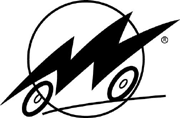
Tour de Sol Road Rally Festival Showed That New ``Green'' Vehicles Can Reduce Greenhouse Gas Emissions and Ease America's Energy Crisis
GREENFIELD, Mass.--June 18, 2001--The "Tour de Sol: The Great American Green Transportation Festival" showcased dozens of vehicles that can reduce greenhouse gas emissions and ease America's energy crisis."The impressive quality of the Tour de Sol's winning vehicles shows that Americans don't have to sacrifice safety, performance or comfort to get a car that's good for the environment," said Warren Leon, executive director of the Northeast Sustainable Energy Association (NESEA), organizer of the festival.
"We were able to collect the best set of vehicle data ever so that we can compare conventional gasoline vehicles with these new advanced vehicles," said Dr. Robert Wills, technical director.
Honda's Insight, pace car for the 300-mile rally that included festivals in six communities between Waterbury, Conn., to Boston, May 19-26, is an excellent example of the new generation of vehicles coming to market.
With a fuel economy of 70 miles per gallon, its gas-electric hybrid engine emits 45 percent less carbon dioxide, the major cause of global warming. A Toyota Prius, a five-seat gas-electric hybrid, achieved 50 miles per gallon, a great improvement over comparably sized Toyota Corolla gasoline control vehicle that achieved 26 mpg over the same course.
The electric vehicles showed even higher efficiencies. Five electric sedans traveled at greater than 110 equivalent miles per gallon, with a maximum of 130 mpg for a Solectria Force(a).
As for carbon dioxide emissions, the major source of global warming, the Toyota Corolla emitted, on average, 391 grams of carbon dioxide per mile, while the Toyota Prius emitted 215 grams per mile. The Honda Insight emitted 150 grams per mile, which was about the same as the best electric sedans, assuming the electricity was produced in the Northeast.
Several electric scooters built by Personal Electric Transport of Hawaii, and brought to the event by China and Micronesia, emitted only 80 grams of carbon dioxide per mile.
"These are the kinds of solutions that will promote energy conservation and energy efficiency in meaningful and effective ways," said U.S. Secretary of Transportation Norman Mineta, at the Tour de Sol finish line ceremonies.
"I want to congratulate all the participants of the Tour de Sol for the important role you're playing in bringing these concepts within reach, and making green transportation a reality."
In addition to vehicles already on the market, the Tour de Sol showcased a broader range of green transportation options than ever before. Dozens of students and individuals brought vehicles that ran on electricity, or fuels such as ethanol, biodiesel, compressed natural gas or propane.
Many exhibitors including Honda, Ford, DaimlerChrysler, Toyota, Korea's Advanced Transportation Technologies, Personal Electric Transport and Spincycle, brought conventional and electric bicycles, new neighborhood vehicles, pre-production prototype fuel cell cars, or information on public transit and pedestrian issues.
Others brought displays demonstrating solar energy or food products produced with the environment in mind. Festival attendees were serenaded by music from the solar-powered stage.
Major sponsors of the 13th annual Tour de Sol included the U.S. Department of Energy (Title Sponsor) and American Honda Motor Co. (Gold Sponsor).
Top finishers in this year's competition were:
Production Division
Hybrid-Electric: Honda Insight, a gas-electric hybrid
(entered by Naoto Inoue)
Battery Electric: Solectria Force (Ethel Walker School,
Simsbury, Conn.)
One-Person Vehicle: PET Caballito Motor Scooter (Team China,
People's Republic of China)
Prototype Division
Hybrid-Electric: "Aluminum Cow," a biodiesel-electric hybrid
(U. of Wisconsin-Madison)
Ethanol Challenge: Chevy Silverado (University of Waterloo,
Ontario, Canada)
Battery Electric: Solectria Super Force (Team New England)
Solar Electric: Solar Black Bear (University of Maine)
One-Person Vehicle:
Best 2-wheeler: Climate Cooler (Team Micronesia,
Federated States of Micronesia)
Best "Commuter:" Sunpacer (Cato-Meridian High School)
Other major sponsors included the Connecticut Department of Transportation, ENSCO Inc., the Massachusetts Department of Environmental Protection, the New York State Department of Environmental Conservation, the New York State Energy Research and Development Authority, the Texaco Ovonic Battery Co., and the Waterbury Region Convention and Visitors Bureau.
Additional major sponsors included: AutomotiveWire, DaimlerChrysler, the Electric Vehicle Association of the Americas, EOTC/MassHighway, Ford Th!nk Mobility, KeySpan Energy Delivery, National Grid, the New York Power Authority, and the U.S. Environmental Protection Agency.
The Tour de Sol is organized by the Northeast Sustainable Energy Association (NESEA), the nation's leading regional association promoting awareness, understanding and development of non-polluting, renewable energy technologies.
With headquarters in Greenfield, NESEA has worked successfully for more than a quarter century in the fields of transportation, building construction and renewable energy.
Further information on the competition, including a complete list of all vehicle scores and results, are available on the Web at www.nesea.org or by calling NESEA at 413/774-6051.
(a) The equivalent mpg of an electric vehicle is calculated by converting kilowatt-hours of charging energy to equivalent gallons of gasoline by dividing by the miles traveled.


